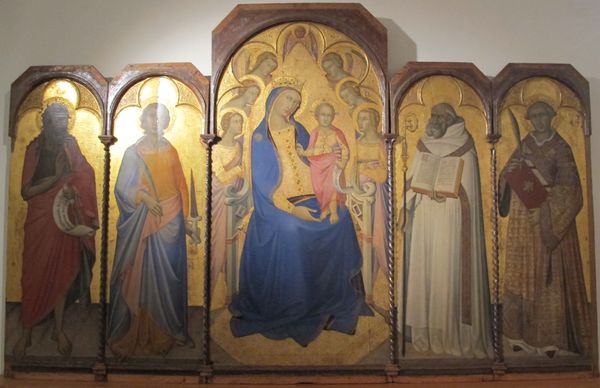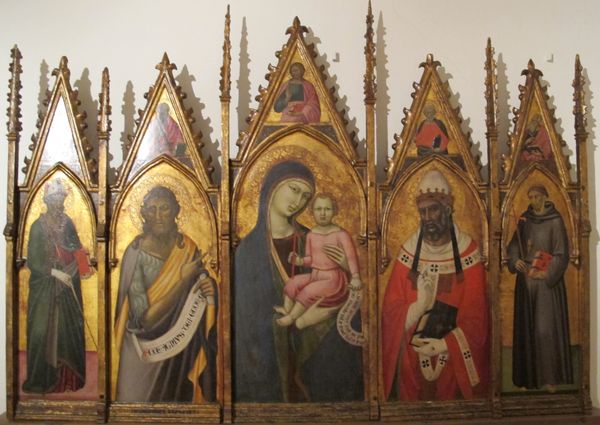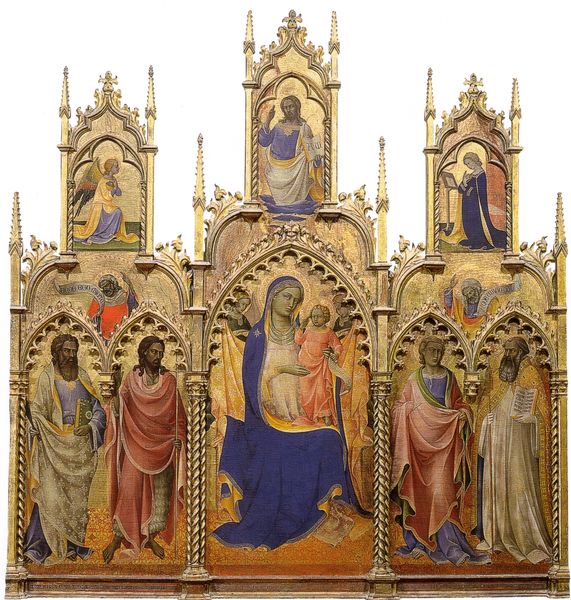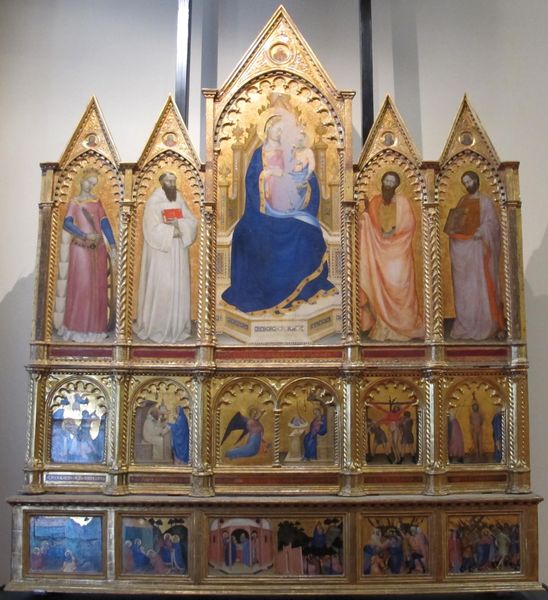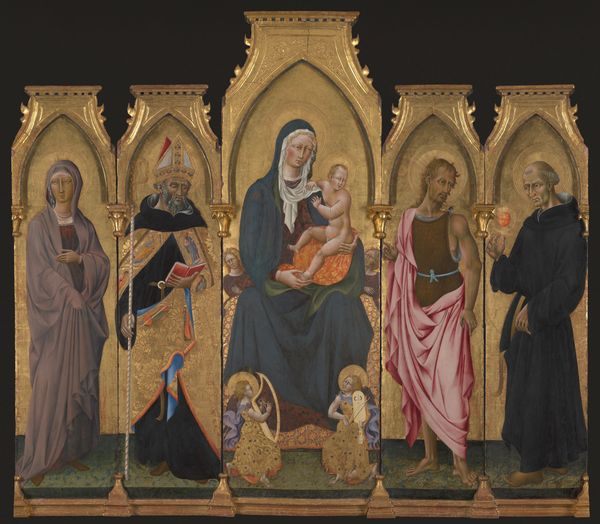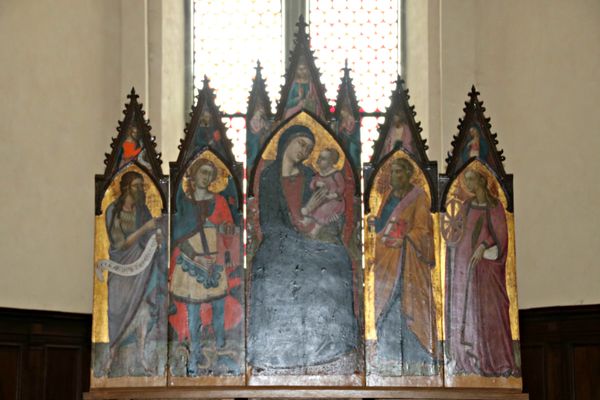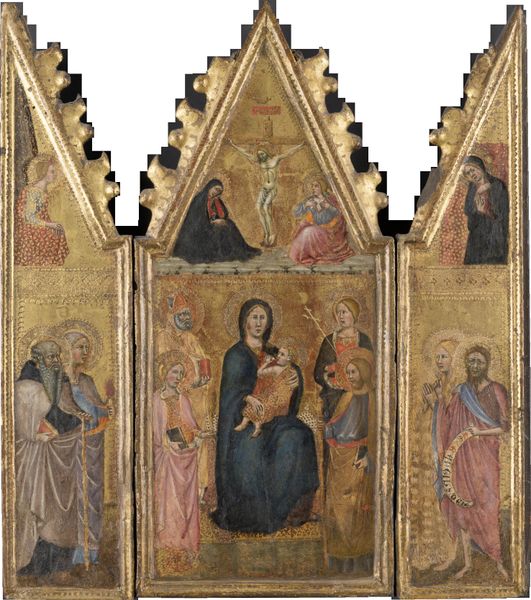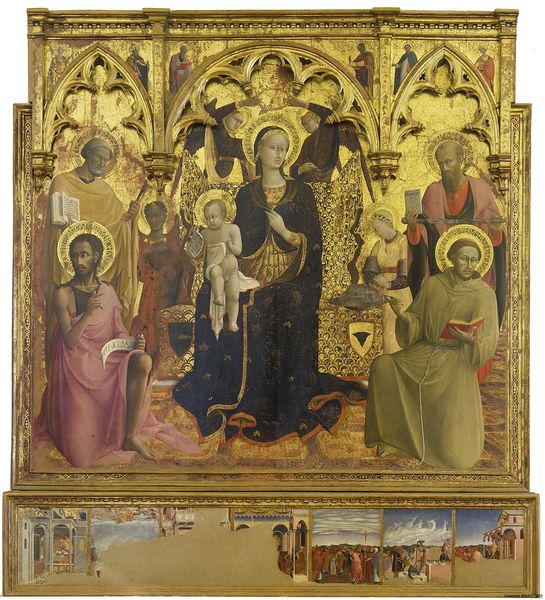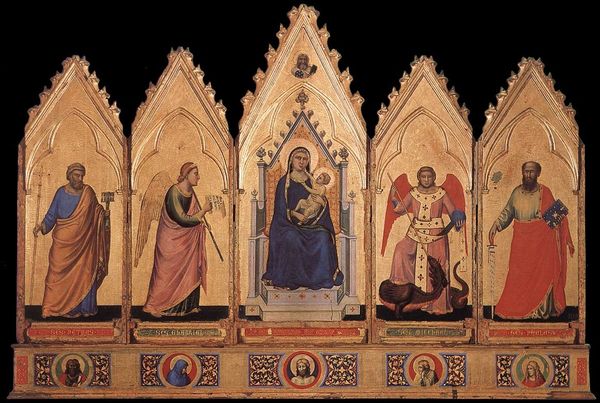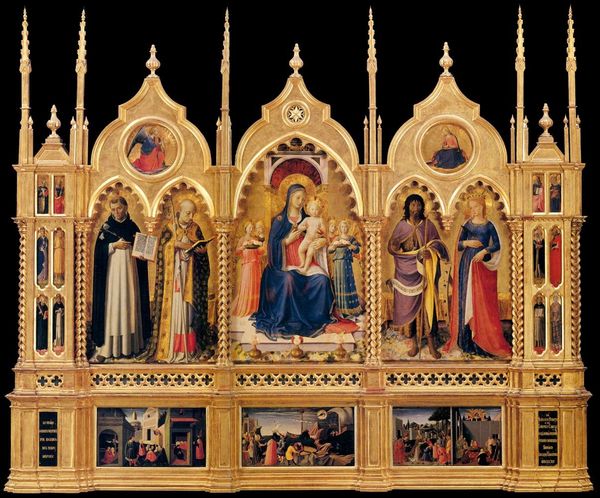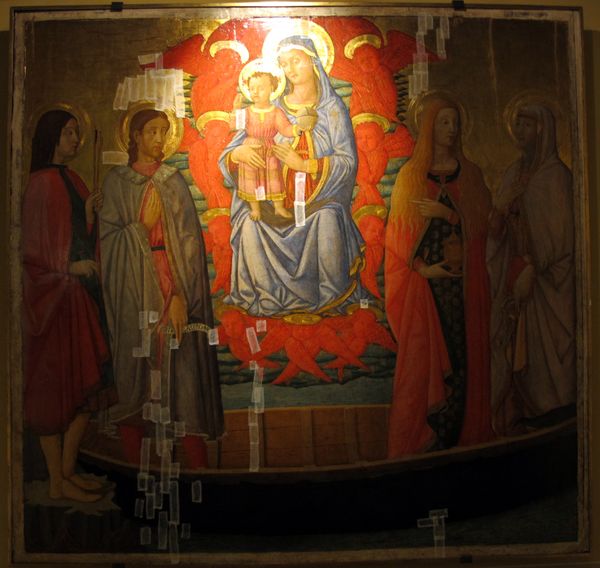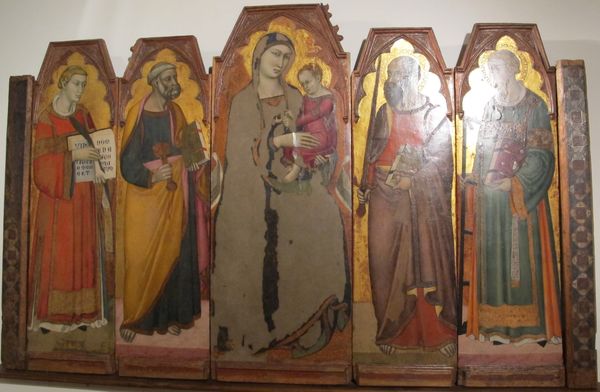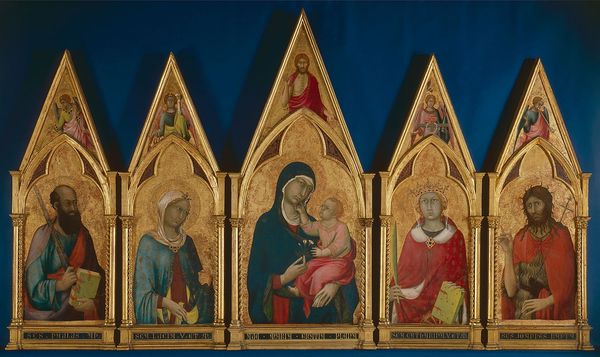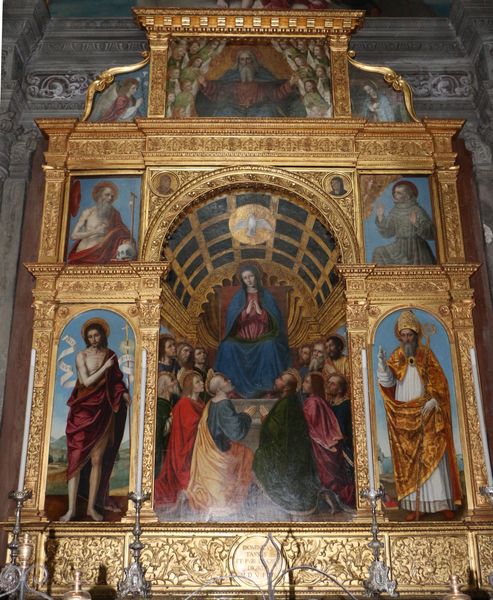
tempera, painting
#
portrait
#
medieval
#
tempera
#
painting
#
figuration
#
oil painting
#
history-painting
#
italian-renaissance
Copyright: Public domain
Curator: Let’s turn our attention to "Metterza e Santi," a tempera-on-panel polyptych painted around 1367 by Luca di Tommè. What strikes you first about this piece? Editor: Immediately, I’m struck by the flatness and formality. The gold background creates this otherworldly space, but the figures themselves seem… constrained, almost geometric. Curator: And that tension is key, isn’t it? This altarpiece was created during a period where the spiritual and earthly realms were intensely intertwined with power dynamics between Church and state, shaping nearly every facet of communal life, and thus individual and collective identities, specifically related to gender. Editor: Tell me more about that intertwining of the spiritual and temporal in terms of formal elements. I’m seeing it now in the color choices – that rich ultramarine, the gold leaf – materials that speak to wealth and status but used to depict, ostensibly, religious figures. The structure emphasizes this separation, and each figure occupies its own distinct architectural space. Curator: The specific gendered aspects within these constraints further deepen its complexity, notably by embodying an idea of the passive virgin figure. It emphasizes female purity as essential within the spiritual and patriarchal hierarchy and mirrors societal gender dynamics. It wasn't until after these gender-based and hierarchial conventions that we observed movements by artists and thinkers contesting and questioning that norm. Editor: Indeed. Consider the central panel: the Virgin and Child, rendered in hierarchical scale, enthroned, surrounded by these rigid saints. Semiotically, each figure carries a coded message through color, gesture, and attribute. But do we see them, beyond their symbolic role? Curator: Well, from the perspective of artistic composition and color palette, you're on point. In retrospect, "Metterza e Santi", with all of its cultural undertones, is quite successful. Editor: Agreed. Despite my initial hesitation, analyzing its components reveals its purpose.
Comments
No comments
Be the first to comment and join the conversation on the ultimate creative platform.
